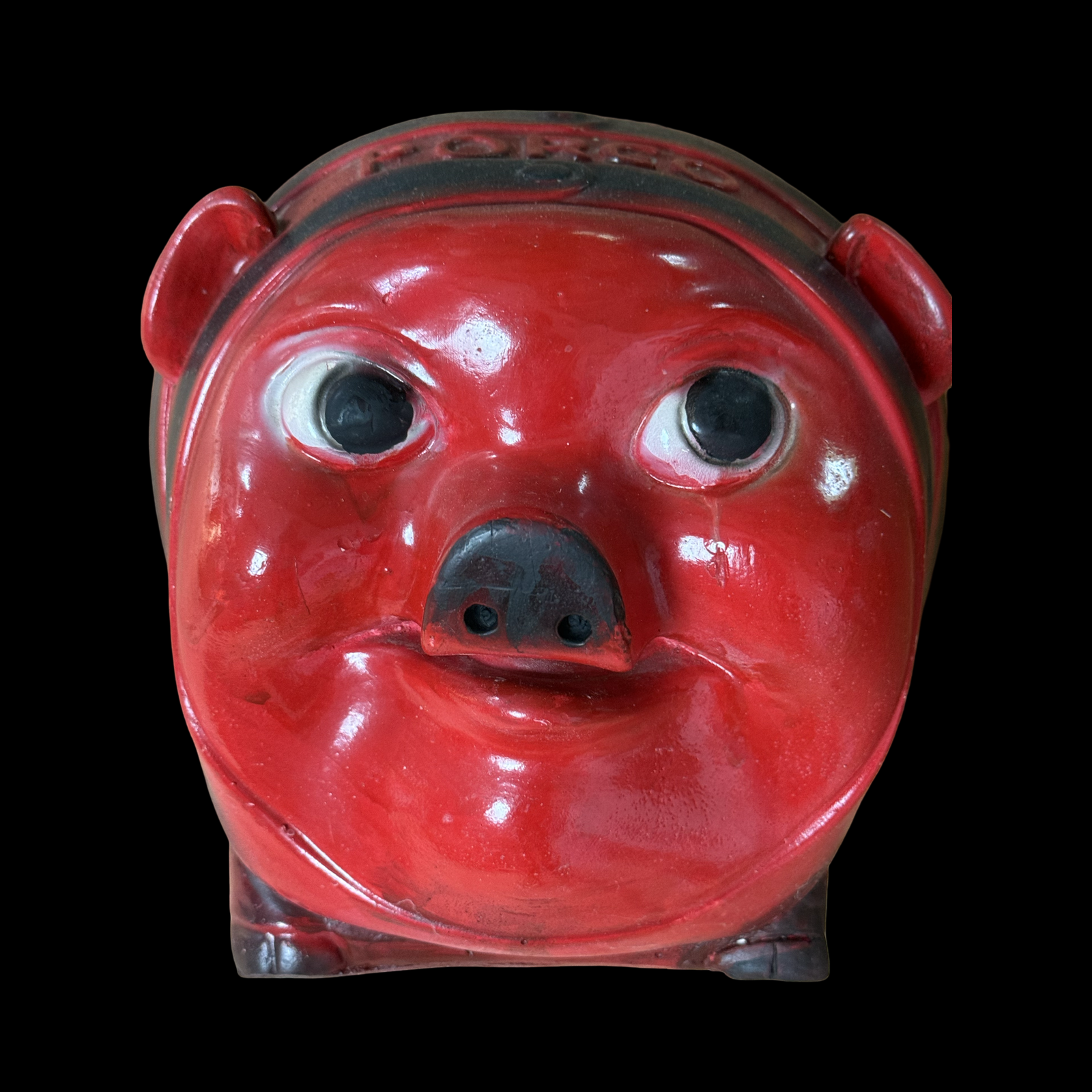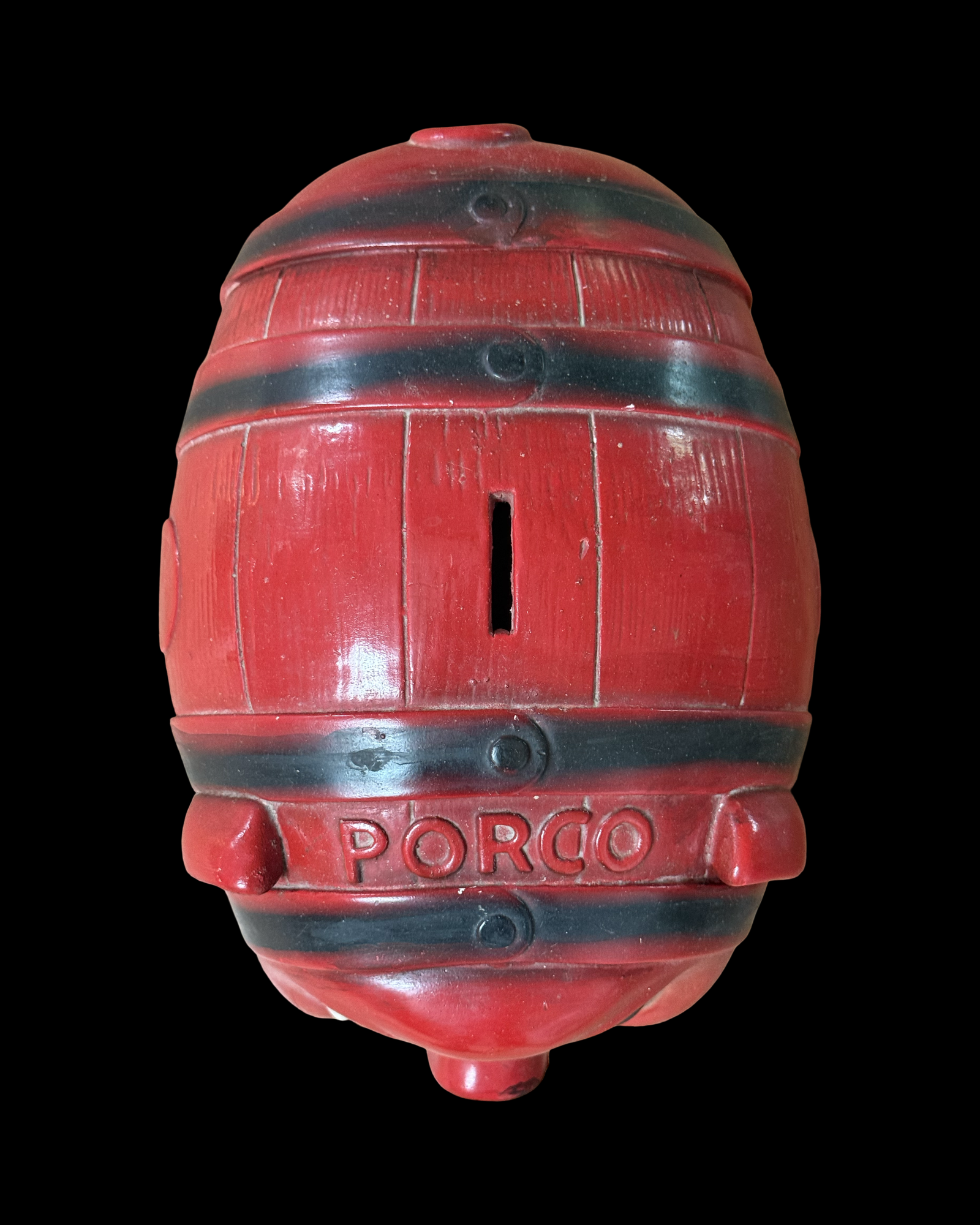Glucksschwein, The Lucky Pig
During the late 19th and early 20th centuries the pig was a popular good luck charm in France, England and Ireland, as well as Germany and Austria, where it was – and still is – known as Glücksschwein (“good luck pig”), and symbolizes good fortune and prosperity. Pigs are prolific. A well-fed sow can have a dozen piglets at a time, and in many cultures, this made pigs symbols of fertility, growth, and the kind of luck that multiplies. Their plumpness and association with feasting and abundance made them natural emblems of the good life.
The practice of collecting coins in a “piggy bank” reinforces the association between pigs and wealth. This belief traces its roots back hundreds of years to a time when having a pig meant having a good source of meat; and having meat meant that your family would not starve. (More on that below.)
Some believe it is fortuitous to start the year by feasting on roast pork, because pigs move forward when foraging, and this forward momentum can carry you into the new year with wind in your sails. But even non-carnivores can partake in this tradition. Over time, a custom developed whereby people would present one another with pigs made of marzipan (or sometimes bread) around the holidays. For this reason, pigs were frequently featured on holiday cards, along with other symbols of good luck such as the four-leaf-clover, horseshoes, gold coins and toadstools. Expressions such as ‘happy as a pig in the mire’, ‘a pig in clover’, and ‘you lucky pig’, reflect the association of pigs with happiness, financial prosperity and good luck.
But the association with pigs and prosperity is not limited to the West. In China, where the character for “home” is a pictograph of a pig beneath a roof, pigs are signs of stability, nourishment, and wealth. In the Chinese zodiac, those born in the Year of the Pig are said to enjoy comfortable lives and warm hearts—and are often surrounded by good fortune (and good food).
Further Reading:
Head over to The Bonheur Blog to read about a three-legged lucky piglet from Chile who is believed to carry good fortune.
Viel Gluck postcard with pig

Gluckliches Neues Jahr postcard with pig



Coral pig charm, House of Good Fortune Collection

Papier mache candy container in the form of a pig

Lucky Pig Charm, Painted enamel, Pitt Rivers Museum
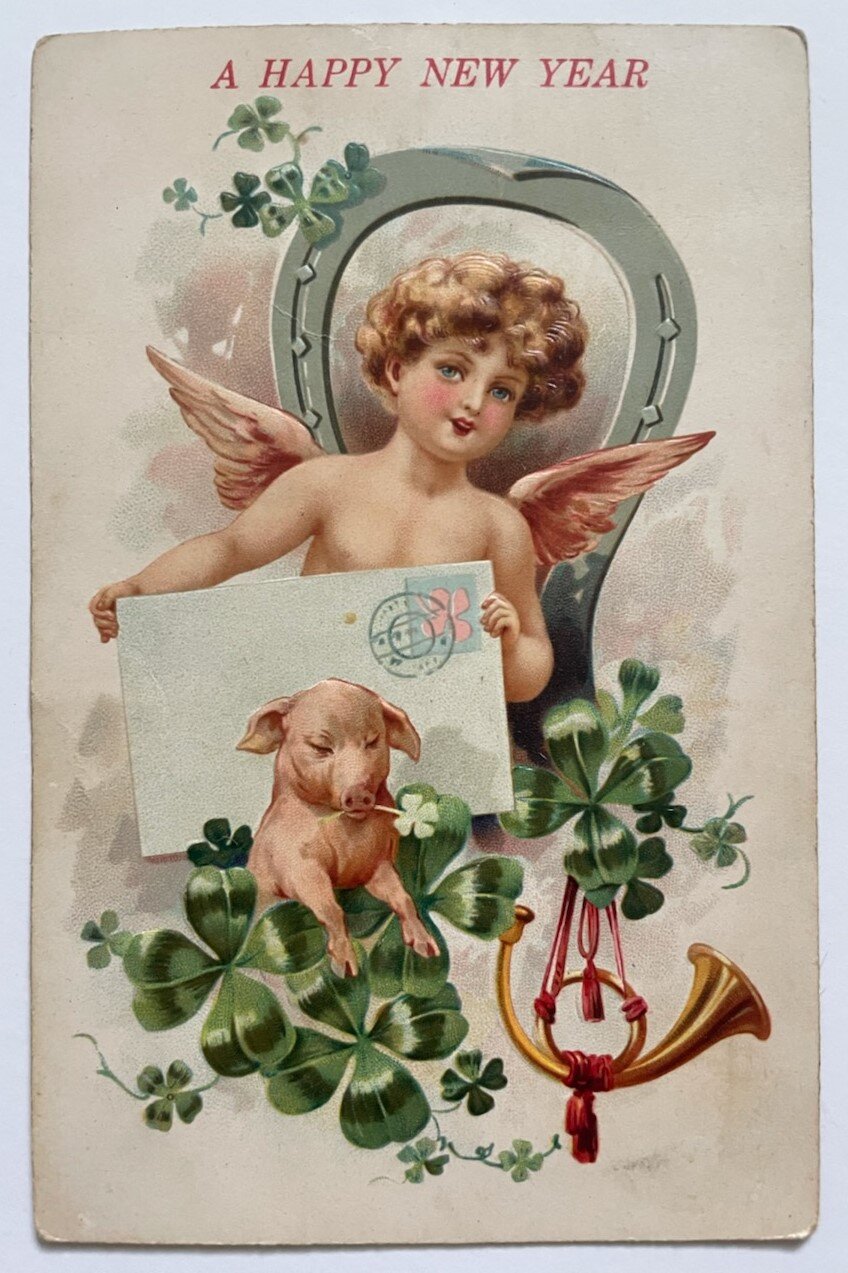
New Year's Card with Horsehoe, Pig and Four Leaf Clover, House of Good Fortune Collection

"Good Luck" Marzipan Pig with horseshoe and four leaf clover, made in Germany by ODW Marzipankonditorei GmbH

Lucky pig with eurocent, Germany, House of Good Fortune Collection

Blue Chalkware Pig, House of Good Fortune Collection.
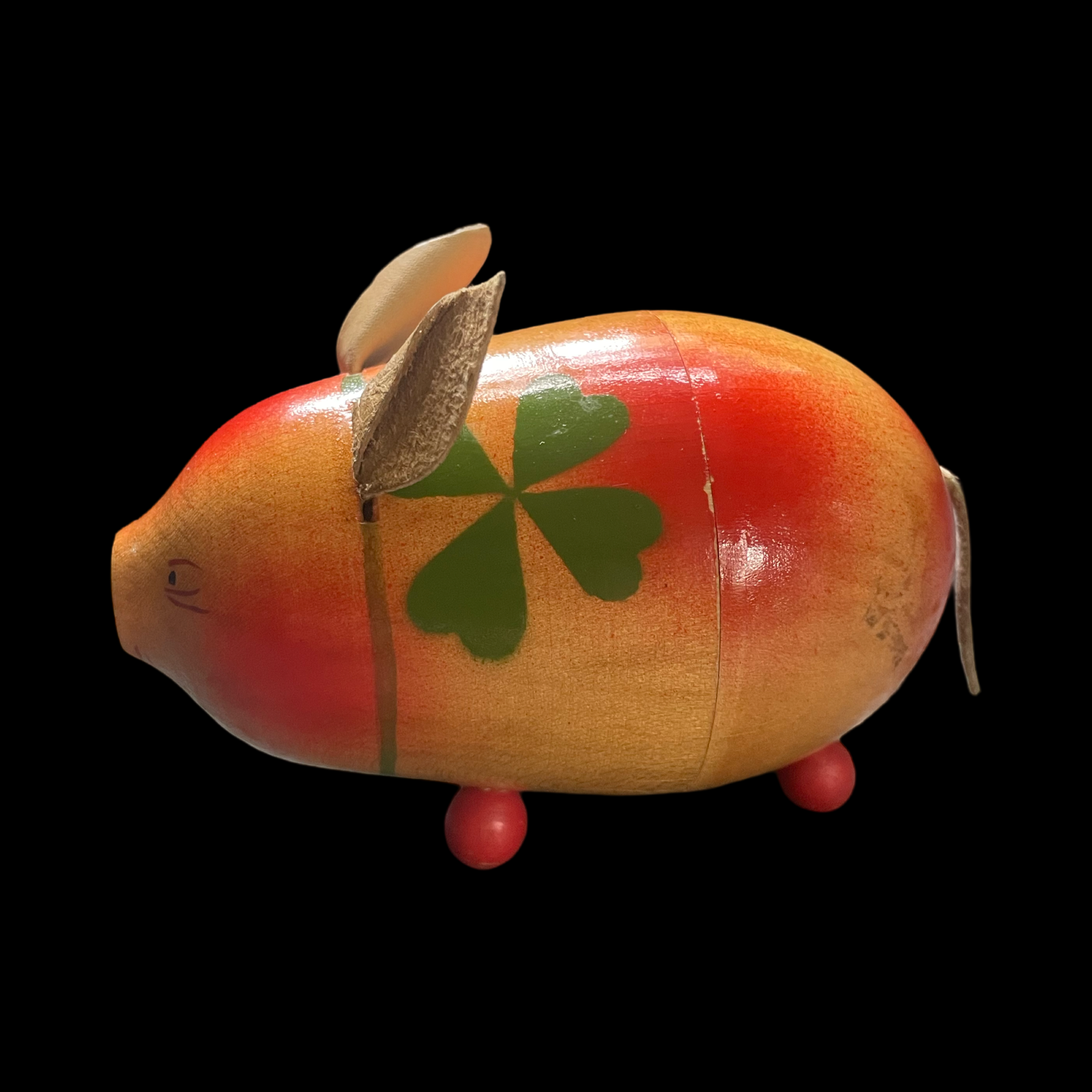
Nesting Dolls pig with lucky four leaf clover, Made in Poland, House of Good Fortune Collection
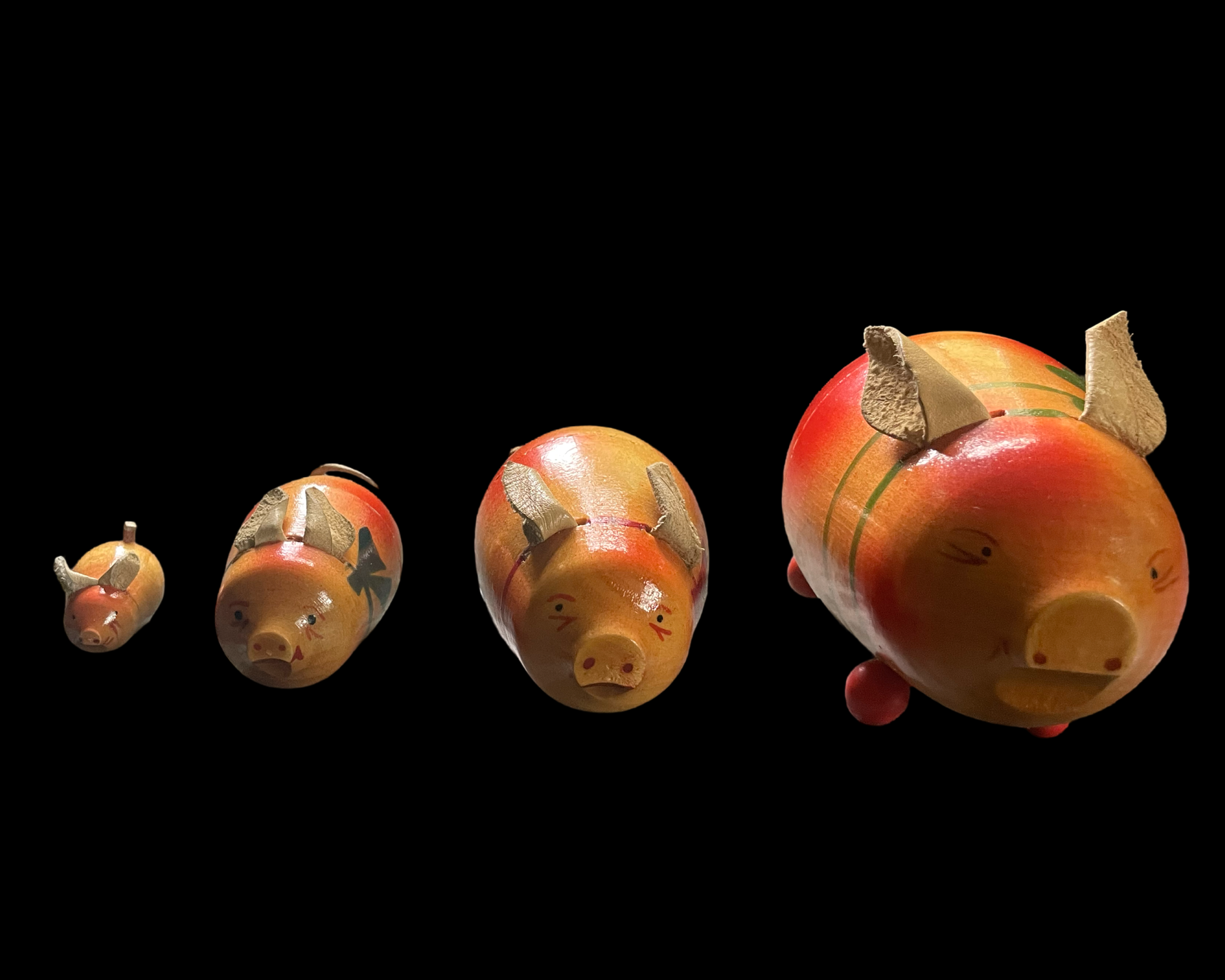
Wooden Nesting Dolls (Four pigs of various sizes with leather ears and tails, Made in Poland, House of Good Fortune Collection
Piggy Banks…then and now…
When it comes to piggy banks, not much has changed over the last 700 years or so. The following images contrast a terracotta piggy bank from Java with a modern ceramic version. In both, the form is essentially the same — you deposit coins in the pig’s back and you must “break the bank” in order to retrieve your funds, a clever feature that encourages saving.
Terracotta piggy bank; Java; c. 1300-1400s; from the collection of The Cleveland Museum of Art. Precious coins could be inserted through the slot (now closed) on the hump of its back. The fierce expression and padlocked chain around its neck indicate its function as a personal bank. The word for “piggy bank” in Eastern Java is tjelegan, meaning “wild boar.”
“Modern” piggy bank; c. mid-20th century; House of Good Fortune Collection
Barrel-shaped piggy bank subtly named “Porco”; by Silvestri Bros.




